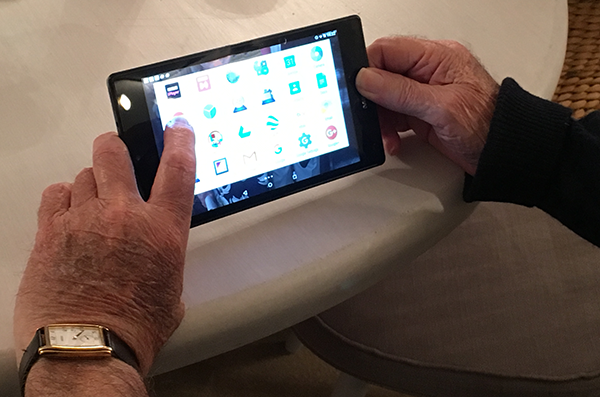Technology is often seen as the domain of the young but more elderly people are starting to use it according to a UK study by the Office for National Statistics. They found that recent internet usage is on the increase for the 65+ age group, nearly doubling from 2011 to 2016.

Unlike the Millennials, the elderly haven’t grown up through the technology revolution and can often find themselves digitally excluded. This can be due to the jargon and complications of technology but also their own lack of interest and resistance to change. However, there are many ways they can benefit from technology and this is set to continue into 2017 especially as the trend for wearables moves towards health wearables for the elderly.
In addition, tech companies are starting to incorporate designs for this age group. Last year I bought my 83-year-old father a tablet for Christmas and it was great to see the option of setting the font as Small, Medium, Large or Huge! The app store provided an array of user-friendly crosswords and word searches to keep his mind active at little or no cost. The ease of tapping around this 8-inch device has so excited him he wants to learn more which is great for cognitive health and the feeling of self- competence that comes from learning new skills.
One of the biggest issues facing the elderly is loneliness. A device can’t replace human contact but it can give them contact to the outside world. Sites like Facebook and Skype mean they can socialise with friends and family wherever they are in the world. Grandparents can keep up to date with younger members of the family using a common platform– even though the youngsters may liaise with friends on other social platforms.
As we’re living longer, health technology solutions increasingly enable the elderly live independent lives which in turn can result in huge savings for health services worldwide. The Lively safety watch connects you to 24/7 help should you fall by one push of a button. In addition, it contains sensors that monitor medication activity, alerting you about any missed. Another wearable is the WOLK airbag belt that activates to provide cushioning when its sensors identify falling motion. For people with loss of vision due to macular degeneration, the NuEyes smart glasses can help them see again. These are just a few examples of how wearables are moving from fitness to helping the older generation lead more independent lives and we should expect to see more in 2017.
So from health to education to socialising, technology can benefit the elderly like it does everyone. However, for all the opportunities it provides, designers must ensure their technology is age-friendly and not over complicate things. Design is not just about the visual aspect but also about usability. 2017 will be an interesting year for technology among this age group. Who knows what I’ll be buying my father next Christmas!
